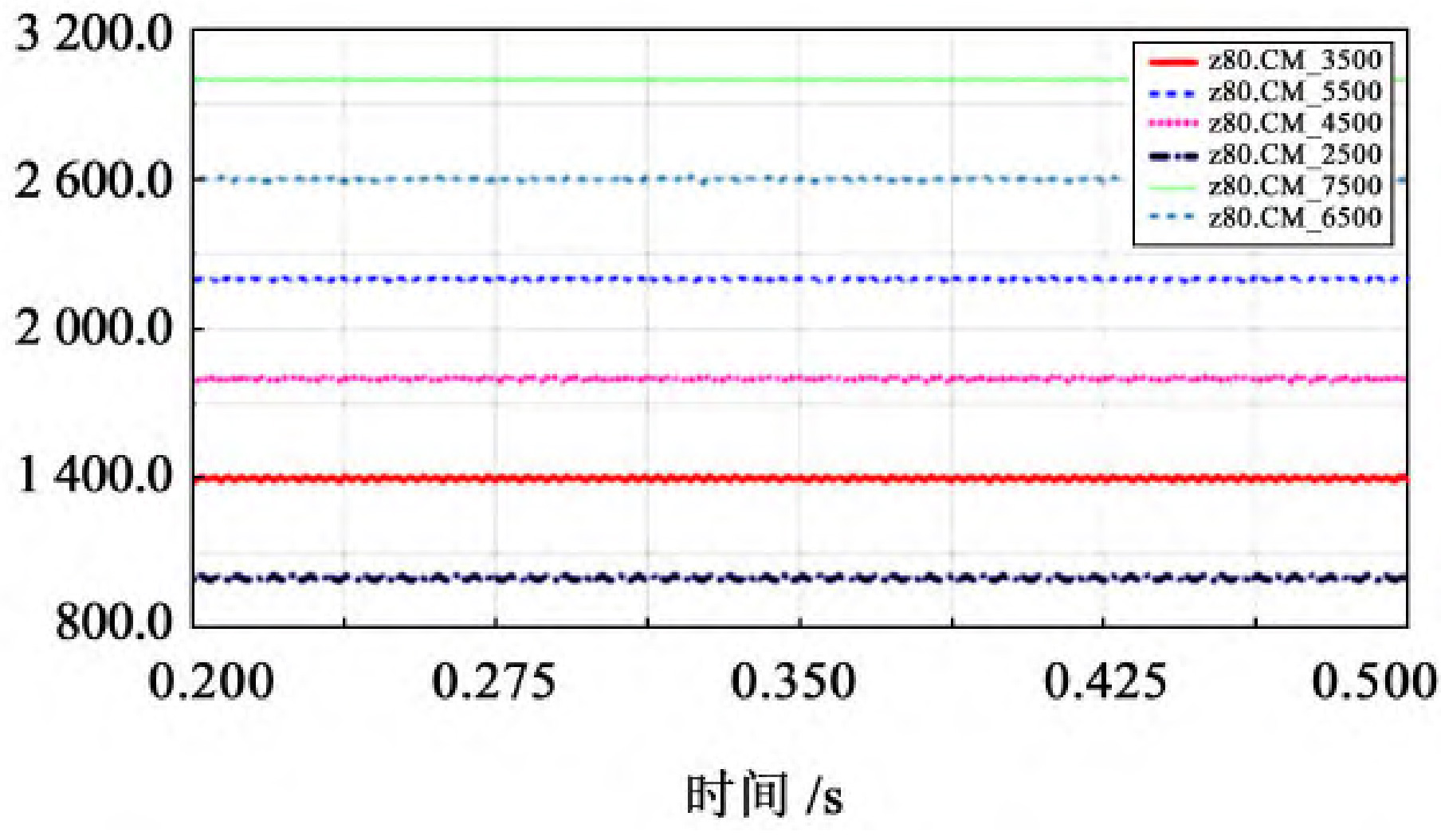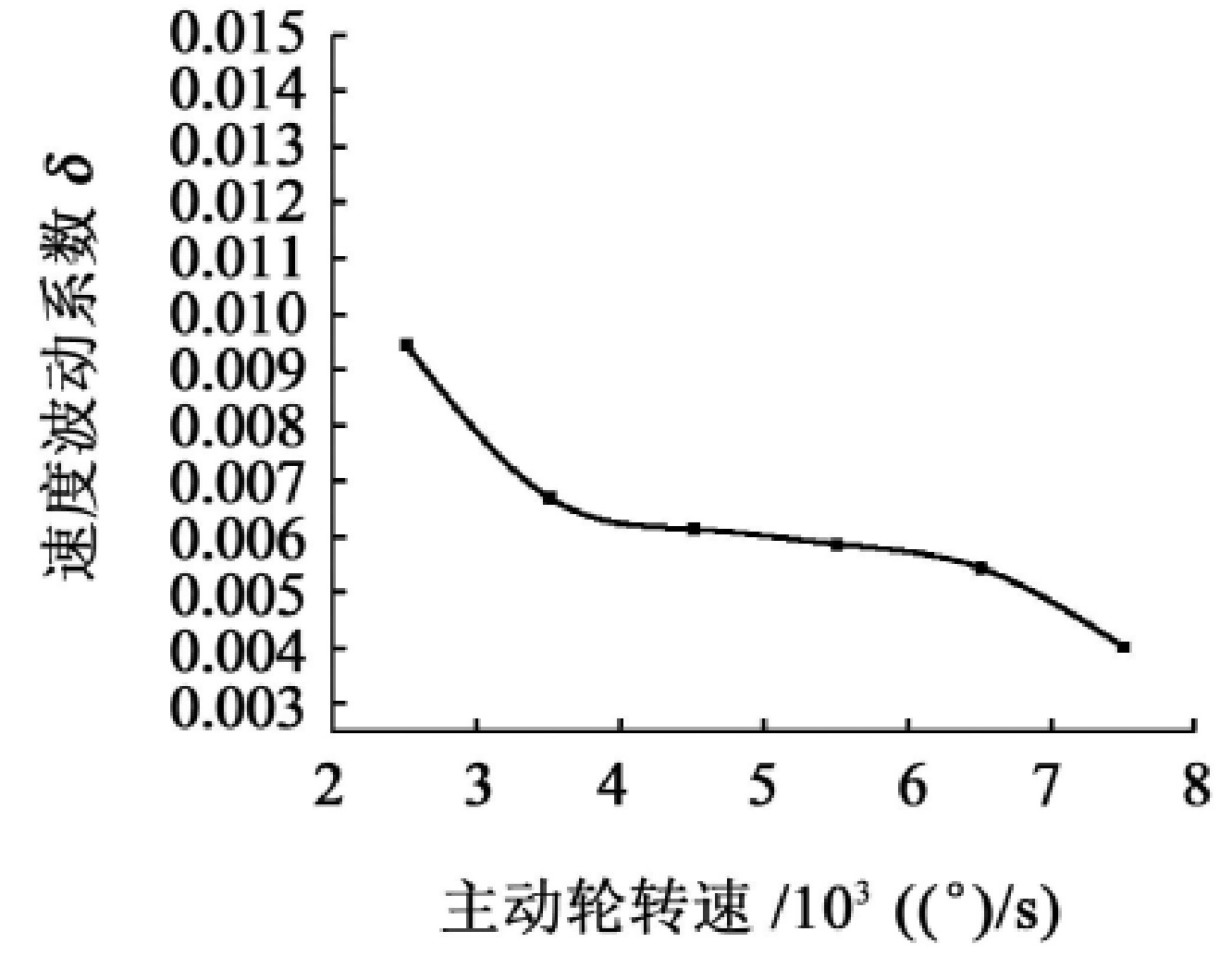At present, the application scenarios of elliptical arc tooth line cylindrical gears are gradually developing towards high-speed and heavy-duty directions. Therefore, whether the elliptical arc tooth line cylindrical gear transmission can maintain excellent smoothness at high speeds has become a key issue. It is necessary to simulate the smoothness of elliptical arc tooth line cylindrical gear transmission at different high speeds and analyze the results.
1. Kinematics simulation parameter setting and data selection
Take the elliptical arc tooth line cylindrical gear pair with cutter head radius RT=100 mm, module m=4 mm, number of pinion teeth z1=32, number of big gear teeth z2=80, tooth width 60 mm, pressure angle 20 °, respectively set the driving gear speed values as 2 500, 3 500, 4 500, 5 500, 6 500, 7 500, and import the elliptical arc tooth line cylindrical gear model to Adams for simulation.
2. Analysis of kinematics simulation results
Dynamic simulations were conducted on the elliptical arc tooth line cylindrical gear transmission at the above six speeds, and the obtained motion simulation curves are shown in Figure 1.

Based on the above experimental data, obtain the maximum, minimum, and average values of the rotational speed, and calculate the theoretical rotational speed of each driven wheel based on the transmission ratio, as shown in the table.
| Gear speed (/°)/s) | Maximum value of driven wheel speed (/°)/s) | Minimum value of driven wheel speed (/°)/s) | Average value of driven wheel speed (/°)/s) | Theoretical speed (/°)/s) | Speed fluctuation coefficient δ |
| 2 500 | 1 013. 649 | 1 000. 172 | 1 000. 018 | 1 000 | 0.013 477 |
| 3 500 | 1 409. 000 | 1 399. 597 | 1 399. 997 | 1 400 | 0.006 716 |
| 4 500 | 1 809. 275 | 1 798. 203 | 1 800. 005 | 1 800 | 0.006 151 |
| 5 500 | 2 209. 829 | 2 196. 900 | 2 200. 007 | 2 200 | 0.005 877 |
| 6 500 | 2 610. 165 | 2 595. 999 | 2 599. 325 | 2 600 | 0.005 450 |
| 7 500 | 3 004. 755 | 2 992. 654 | 3 000. 002 | 3 000 | 0.004 034 |
Calculate the speed fluctuation coefficient of each group of elliptical arc tooth line cylindrical gear transmission based on the theoretical formula of speed fluctuation δ Fill in the table and use the rotational speed of the elliptical arc tooth line cylindrical gear as the horizontal coordinate and the velocity fluctuation coefficient as the vertical coordinate. Draw the velocity fluctuation coefficient points in the coordinate system and fit them with a spline curve. The trend of their changes is shown in Figure 2.

As shown in Figure 2, as the speed of the driving wheel increases, the speed fluctuation coefficient first rapidly decreases, then stabilizes, and then steadily decreases. The conclusion is that as the speed of the driving wheel increases, the overall speed fluctuation coefficient decreases, and the smoothness of the elliptical arc tooth line cylindrical gear transmission becomes better and better. This conclusion indicates that the elliptical arc tooth line cylindrical gear can be matched for use under high speed conditions, and the transmission is stable.
